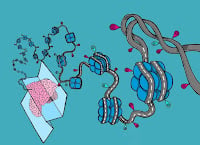Study Finds Evidence Why Autism, Schizophrenia Are Less Prevalent in Females

By analyzing genetic data from over 2,000 postmortem brain samples, researchers found that females with autism spectrum disorder (ASD), bipolar disorder, or schizophrenia had greater dysfunction in gene expression relative to males with these conditions. Gene expression relates to which proteins and other functional elements are turned on or off in a given sample.
These findings were published yesterday in Science Translational Medicine as part of a collection of studies from PsychENCODE—a consortium funded by the National Institute of Mental Health seeking to decipher the molecular and genetic architecture of the brain.
These results provide more evidence of a “female protective effect” for certain psychiatric disorders, wrote Yan Xia, Ph.D., of the Broad Institute of Harvard and MIT in Cambridge, Mass., and colleagues. The idea is that females are more resilient to disorders like ASD and thus require more biological and environmental adversity before symptoms manifest.
Xia and colleagues obtained gene expression data from postmortem prefrontal cortex tissue of 593 individuals with schizophrenia (204 female), 253 with bipolar disorder (107 female), 82 with ASD (16 female), and 1,232 control individuals without a history of psychiatric disorders (413 female).
The researchers found that for each of these three disorders, females with the disorder had significantly more gene expression differences relative to controls compared with male individuals and controls. Beyond individual genes, the researchers also examined gene networks—a series of genes that are typically regulated together because they are part of the same biological pathway. Once again, females with ASD, bipolar disorder, or schizophrenia had significantly greater disruptions in their gene networks than males relative to controls.
For both the individual gene and gene network analyses, the greatest male-female differences were observed for individuals ASD. Among the three disorders studied, ASD also has the most pronounced male-to-female disparity in prevalence.
As a further test, Xia and colleagues analyzed postmortem brain samples from individuals with major depression, which is slightly more prevalent in females. The gene expression data indicated that for this disorder, males had greater gene expression differences compared with females.
“Taken together, these results suggest that the differences in gene expression and [gene] connectivity between males and females may contribute to the sex differences in the prevalence, age of onset, and symptom severity of ASD, [schizophrenia], and [bipolar disorder],” Xia and colleagues wrote.
The full psychENCODE phase 2 collection is available here. To read about another project from the psychENCODE consortium, see the Psychiatric News article “Advanced Gene Sequencing Study Recognized by AJP Editors.”
(Image: Jessica Johnson)
Psychiatric News Seeks Contributions From Members
New Editor in Chief Adrian Preda, M.D., invites APA members to become involved in Psychiatric News by writing news or opinion articles on the topic of their choice or by applying for leadership positions to invite and curate articles from other members in new sections that include the areas of technology, sex and gender issues, advocacy, psychotherapy, integrated psychiatry and primary care, and consultation-liaison psychiatry. Interested? For more information, send an email to editor@psych.org.





